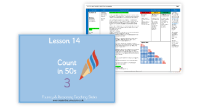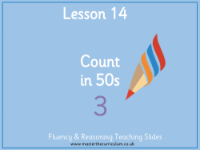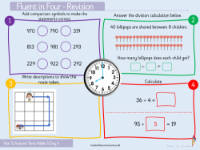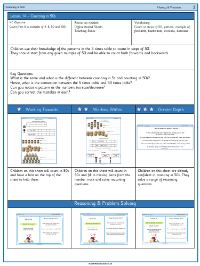Place value - Count in 50s - Planning
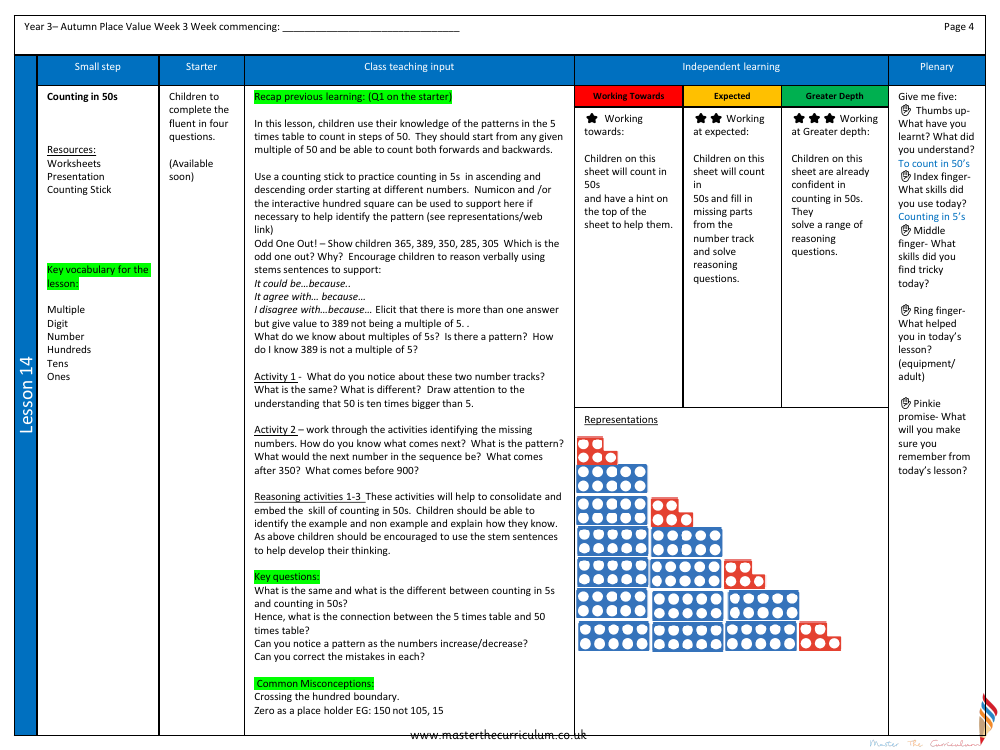
Maths Resource Description
In a Year 3 mathematics lesson focusing on place value, students are introduced to the concept of counting in increments of 50. This lesson is part of the Autumn term's third week of place value study. To facilitate learning, resources such as worksheets, a presentation, and a counting stick are employed. The key vocabulary for the session includes terms like 'multiple', 'digit', 'number', 'hundreds', 'tens', and 'ones'. Students begin by completing 'fluent in four' questions, which are designed to recap their prior knowledge, including the patterns found in the 5 times table. They then apply this understanding to count in 50s, starting from any multiple of 50 and progressing both forwards and backwards. The lesson includes the use of a counting stick and, if necessary, Numicon or an interactive hundred square to help identify counting patterns.
The main activities of the lesson challenge students to notice patterns and differences between counting in 5s and 50s, emphasizing that 50 is ten times larger than 5. Students work through identifying missing numbers in number sequences and engage in reasoning activities to consolidate their skills in counting by 50s. They are encouraged to use sentence stems to articulate their reasoning, especially when identifying odd numbers out or explaining why certain numbers are not multiples of 5. The lesson is structured to cater for different levels of understanding: 'working towards', 'expected', and 'greater depth'. Each level provides appropriate challenges and hints to guide students. By the end of the lesson, students reflect on what they have learned, the skills they used, and what they found challenging, ensuring they understand the importance of zero as a placeholder and how to cross the hundred boundary correctly when counting in 50s.
